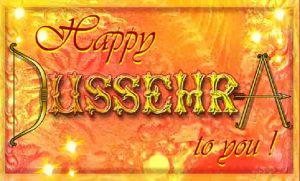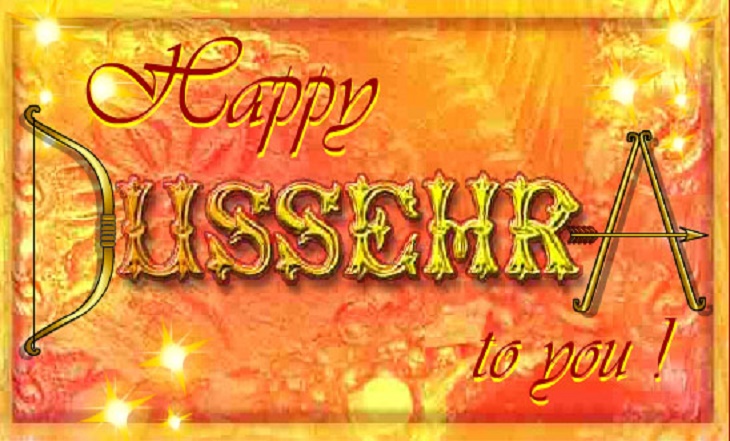
Why Do We Celebrate Dussehra or Vijayadashami?
Dussehra, also known as Vijayadashmi, is a major festival celebrated in India on the tenth day of Ashvin month according to the Hindu calendar. This day falls in the month of September or October. The day culminates a 9 day fasting period of Navratri in the Hindu culture. The day also coincides with immersion of the idol of Goddess Durga. The day is celebrated to commemorate the killing of demon Mahishasur by Goddess Durga. The day also celebrates the killing of Ravana by Lord Rama. Dussehra celebration spreads the message of the victory of good over sin.
Vijayadashami also known as Dasara, Dashahara, Dussehra, Dashain (in Nepal), Navratri or Durgotsav is one of the most important Hindu festivals celebrated in various forms, across Nepal, India and Bangladesh. The name Dussehra is derived from Sanskrit Dasha-hara literally means The sun will not rise (Dasha(sun) and Hara(defeat)) referring to Lord Rama’s victory over the ten-headed demon king Ravana. It is celebrated on the tenth day of the month of Ashwin according to the Hindu lunisolar calendar which corresponds to September or October of the Gregorian calendar. The first nine days are celebrated as Maha Navratri or Sharada Navratri (the most important Navratri) and culminates on the tenth day as Dasara.
Importance and Celebration of Dussehra:
The festival of Dussehra are celebrated for ten days in the month of Ashvin, or Ashwayuja as per the Hindu lunar calendar (September or October) from Shukla Paksha Pratipada, or the day after the new moon which falls in Bhadrapada, to Dashami, or the tenth day of Ashvin. The preceding nine days to Dussehra are collectively known as ‘Navratri’ and are dedicated to the worship of Mother Goddess, Shakti. For Bengalis, Dussehra a is part of their most important festival Durga Puja, wherein Goddess Durga, an incarnation of Mother Goddess, is revered with great religious fervor and on the day of Vijayadashmi, her idols are immersed in water with tremendous pomp and show. In southern states of Kerala and Tamil Nadu, the day (Dussehra) sees Saraswati Puja being organized in most households and education of small kids commences from this auspicious day onwards, which is known as ‘Vidya aarambham’. Mysore Dussehra is also known for its grandeur. Thus, the name or the way of celebrating this pious Hindu festival might be different across the country, but it celebrates the victory of good over evil all over.
Victory of Lord Rama over Ravana:
As per Hindu religion, on this day in the Treta Yug, King Rama, also called Shri Ram, the seventh avatar of Vishnu, killed the great demon Ravana who had abducted Rama’s wife Sita to his kingdom of Lanka. Rama, his brother Lakshmana, their follower Hanuman and an army of monkeys fought a great battle to rescue Sita. The entire narrative is recorded in the epic Ramayana, a Hindu scripture. Rama had performed “Chandi Homa” and invoked the blessings of Durga, who blessed Rama with secret knowledge of the way to kill Ravana. On the day of Ashvin Shukla Dashami, Rama’s party found Sita and defeated Ravana. Thus it is termed as Vijaya Dashami.
